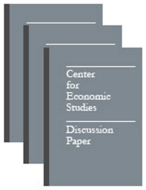
An official website of the United States government
Here’s how you know
Official websites use .gov
A .gov website belongs to an official government organization in the United States.
Secure .gov websites use HTTPS
A lock (
) or https:// means you’ve safely connected to the .gov website. Share sensitive information only on official, secure websites.
-
//
- Census.gov /
- Library /
- Census Working Papers /
- Race, Class, and Mobility in U.S. Marriage Markets
Race, Class, and Mobility in U.S. Marriage Markets
Race, Class, and Mobility in U.S. Marriage Markets
Abstract
We study racial-ethnic disparities in marital and economic status by linking American Community Survey respondents born in 1978-87 to their parents’ tax records. Conditional on childhood family income (CFI), we find that the average Black non-Hispanic woman obtains 60 percent less partner income than does the average White non-Hispanic woman, driven both by a lower propensity to be partnered and a lower partner CFI rank. These marriage market dynamics account for 85 percent of the observed—and large—gap in intergenerational family income mobility. We also show that mobility gaps are larger, and rates of intermarriage lower, in birth areas with greater CFI inequality and racial-ethnic segregation. We discuss a simple model in which these patterns originate from segmentation of the marriage market along racial-ethnic lines combined with imperfect assortative matching on economic status. We comment on the implications of our findings for policy.
Others in Series
Working Paper
Working Paper
Working Paper
Share
Related Information
Some content on this site is available in several different electronic formats. Some of the files may require a plug-in or additional software to view.
The content on this page includes a link to a non-government website. Our linking to these sites does not constitute an endorsement of any products, services or the information found on them. Once you link to another site you are subject to the policies of the new site.
 Yes
Yes
 No
NoComments or suggestions?


Top

